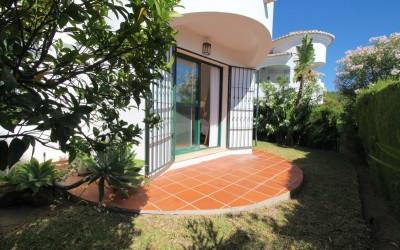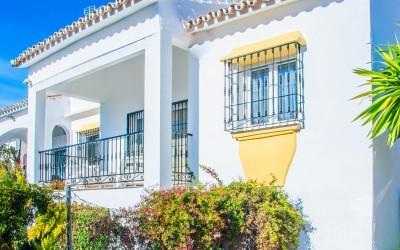
In a country as sunny as Spain, it seems like a no-brainer to install solar panels in your home and take advantage of all that affordable (and easily accessible) energy. Yet up until 2019, Spain was known to experts in photovoltaic energy as the country that ‘taxes the sun’. This is because in 2013, legislation was introduced that made it compulsory for any individual or company to hook their solar panels up to the national grid to be metered and taxed. If they didn't do this, they would face fines that could be as much as several millions of euros.
This is a policy that was unmatched elsewhere in the world and it attracted global scorn. Forbes magazine wrote that: "Spain is now attempting to scale back the use of solar panels – the use of which they have encouraged and subsidized over the last decade – by imposing a tax on those who use the panels". Thankfully, this policy was overturned in 2019, and alternative measures were introduced to ensure that renewable energy became an attractive proposition in Spain once more.
With that in mind, here is everything you need to know about installing solar panels in Spain, in a post-2019 world:
Understanding the Costs Involved
A 2019 study by the Spanish Observatory of Photovoltaic Self-Consumption found that solar panel usage in homes in Spain will grow 30 times by 2022, because they are an increasingly attractive and affordable way to power your home. The cost of installing solar panels on your home has fallen considerably, with prices differing depending on the types of panel you choose and ranging in price from between €260 to €441 per solar panel. Here is a quick breakdown of some of the most popular panels on the Spanish market:
Sunpower SPR-X21-345: €441,65
Panasonic VBHN325SJ47: €275,88
Aleo X59: €350,9
QCells Q.Peak-G4.1 305: €260,15
REC 280TP: €379
Calculating the exact price of putting solar panels on your home is difficult, as it will depend on the size of your roof and the number of panels you need, amongst other factors. You must also take into account any installation costs, which range from between € 600 to € 1,200 for an average-sized home, and then wiring and meter installation, which you can expect to pay €1,200 for.
Do I Still Have to Connect my Panels to the National Grid?
Since 2019, the obligation to connect your own solar panels to the national electricity grid has been removed. In the vast majority of cases, most homeowners do choose to connect their panels, if you would rather not for some reason then you no longer have to. Being ‘off grid’ may not be appealing because if you’re not connected to the grid, you’ll have to be self-energy reliant at all times and will probably need your own energy storage systems, for example, batteries.
But being hooked up to the grid does have some excellent benefits: if you’re linked up and your solar panels produce more electricity than you need for your own use then you can get your money back for that excess electricity. Don’t produce all the other electricity you need? You can still pull power from the grid, and will never be at risk of not having the power you need.
Understanding the Spanish Government’s Attitudes to Solar Panels
As we mentioned above, a new Royal Decree can into force in 2019 that changed the way Spanish homeowners look at the use of solar panels. The degree states that: "Spain’s energy system has begun a process of transition towards a new paradigm characterised by decarbonisation, decentralisation of energy generation, electrification of the economy, more active consumer participation and more sustainable use of resources".
The Spanish government is keen for its citizens to ‘go green’ and choosing to promote the installation of solar panels is just one of the ways of doing this. As well as promoting solar panels, the Spanish government is also providing subsidies to encourage homeowners to consider their installation. Spain’s Tax Agency may deduct 20 percent of the amount spent on installing solar panels at your first or second home in Spain, as long as the panels are meant for home consumption and are not being used as an economic activity.
Different regions in Spain are also introducing their own legislation to encourage renewable energy development, so it could well be that you are entitled to additional subsidies depending on where you live: it’s well worth checking out your local community website to see if any of these benefits apply to you.
How much can I save on electricity bills if I install solar panels?
It’s important to note that you won’t start saving money on your solar panels the day they are installed: the average time it takes homeowners with solar panels to recoup their investment is 5 to 8 years right now: as the technology continues to evolve this timespan will get shorter. How much, exactly, you will save will depend on the size of your house, how much energy you use, and how many panels you have installed.
According to a 2016 study by energy consumption analysts Mirubee, the installation of solar panels on the roof of a house in Spain can save those homeowners an average of around 24 percent off their monthly electricity bills. It’s a figure well worth considering if you’re looking to shave some money off your monthly bills, and do your bit to save the planet at the same time.
Are you in the process of moving to Spain or looking to make the right move to Spain for you? If you’re looking for estate agents on the Costa Del Sol then why not get in touch with Right Casa Estates? Our locally based property experts are a font of local knowledge, and are perfectly placed to help you find the home of your dreams.

 English
English Español
Español Deutsch
Deutsch Français
Français Svenska
Svenska Nederlands
Nederlands Italiano
Italiano Norsk
Norsk Русский
Русский

































